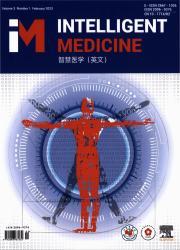Improving vertebral diagnosis in computed tomography scans: a clinically oriented attention-driven asymmetric convolution network for segmentation
IF 6.9
Q1 COMPUTER SCIENCE, INTERDISCIPLINARY APPLICATIONS
引用次数: 0
Abstract
Objective
Vertebral segmentation in computed tomography (CT) images remains an essential issue in medical image analysis, stemming from the variability in vertebral shapes, high complex deformations, and the inherent ambiguity in CT scans. The purpose of this study was to develop advanced methods to effectively address this challenging task.
Methods
We proposed an attention-driven asymmetric convolution deep learning (AACDL) framework for vertebral segmentation. Specifically, our approach involved constructing a novel asymmetric convolutional U-shaped deep learning architecture to enhance the feature extraction capabilities by increasing its depth for capturing richer spatial details. Further, we constructed a pyramid global context module that integrates global context information through pyramid pooling to boost segmentation accuracy particularly in smaller anatomical regions. Sequential channel and spatial attention mechanisms were also implemented within the network to enable it to automatically concentrate on learning the most salient features and regions across different dimensions.
Results
The performance precision of our network was rigorously assessed using a suite of four benchmark metrics: the dice coefficient, mean intersection over union (mIoU), precision rate, and F1-score. When compared against the ground truth, our model delivered outstanding scores, attaining a dice coefficient of 82.79%, an mIoU of 90.72%, a precision rate of 90.19%, and an F1-score of 90.09%, each reflecting the commendable accuracy and reliability of our network's segmentation output.
Conclusion
The proposed AACDL method might successfully realize accurate segmentation of vertebral CT images, thereby demonstrating significant potential for clinical applications with its robust performance metrics. Its ability to handle the complexities associated with vertebral segmentation may pave the way for enhanced diagnostic and treatment planning processes in healthcare settings.
改进椎体诊断在计算机断层扫描:一个临床导向的注意力驱动的不对称卷积网络分割
由于椎体形状的可变性、高度复杂的变形和CT扫描固有的模糊性,计算机断层扫描(CT)图像中的椎体分割仍然是医学图像分析中的一个重要问题。本研究的目的是开发先进的方法来有效地解决这一具有挑战性的任务。方法提出了一种注意力驱动的非对称卷积深度学习(AACDL)框架进行椎体分割。具体来说,我们的方法涉及构建一种新的非对称卷积u形深度学习架构,通过增加深度来捕获更丰富的空间细节,从而增强特征提取能力。此外,我们构建了一个金字塔全局上下文模块,该模块通过金字塔池集成全局上下文信息,以提高分割精度,特别是在较小的解剖区域。在网络中还实施了顺序通道和空间注意机制,使其能够自动集中精力学习不同维度上最显著的特征和区域。结果我们的网络的性能精度使用一套四个基准指标进行了严格的评估:骰子系数,平均交联(mIoU),准确率和f1分数。与地面真实值相比,我们的模型取得了出色的成绩,达到了82.79%的骰子系数,90.72%的mIoU, 90.19%的准确率和90.09%的f1分数,每个都反映了我们网络分割输出的值得称赞的准确性和可靠性。结论所提出的AACDL方法可以成功实现椎体CT图像的精确分割,具有鲁棒性,具有临床应用潜力。它处理与椎体分割相关的复杂性的能力可能为增强医疗保健环境中的诊断和治疗计划过程铺平道路。
本文章由计算机程序翻译,如有差异,请以英文原文为准。
求助全文
约1分钟内获得全文
求助全文
来源期刊

Intelligent medicine
Surgery, Radiology and Imaging, Artificial Intelligence, Biomedical Engineering
CiteScore
5.20
自引率
0.00%
发文量
19
 求助内容:
求助内容: 应助结果提醒方式:
应助结果提醒方式:


